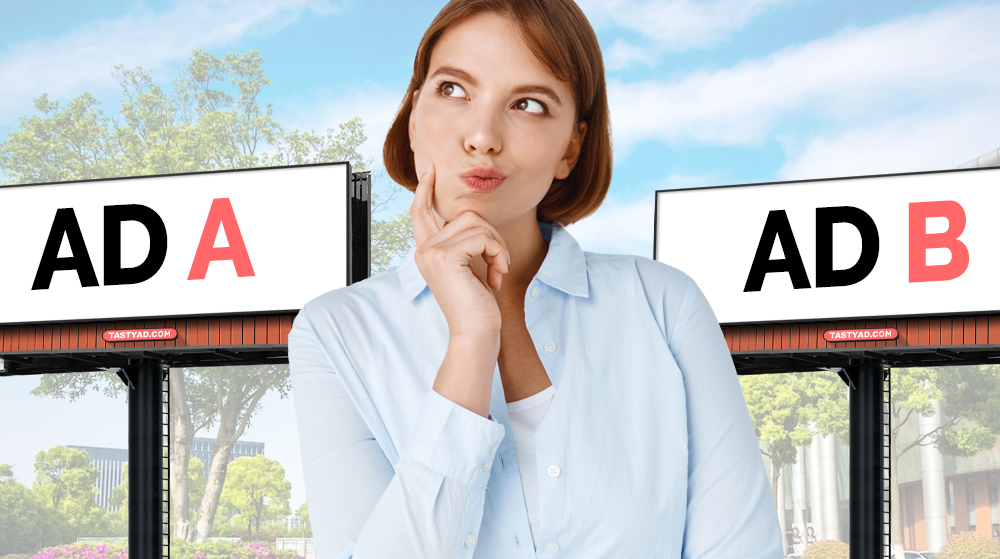A/B Ad Testing in OOH – What is it & How to do it

A/B testing, also known as split testing, is a method used in marketing to compare two versions of an advertising asset to determine which one performs better. The goal is to identify the version that yields higher conversion rates, engagement, or other desired outcomes. A/B testing is widely used in online advertising but can also be applied to out-of-home advertising.
In the context of ad testing in OOH or on billboards, A/B testing involves creating two variations of an advertisement, referred to as variant A and variant B. These variations typically differ in a specific element, such as the headline, imagery, call-to-action, or overall design. The purpose is to assess which variant resonates better with the target audience and generates more favorable results.
The most important step in A/B Testing in OOH
Before launching an out-of-home (OOH) campaign, it is crucial to establish your objectives and the methods for measuring their success. Are you aiming to enhance brand recognition, attract more website or in-store visitors, generate leads, or amplify sales? Based on your desired outcomes, you must select suitable metrics and tools for monitoring progress. For instance, if the purpose of our OOH campaign is to drive more website traffic, you must have measurement tools in place to track the outcomes of the ads.
Here’s a step-by-step overview of how A/B ad testing typically works in Out of Home:
- Define the objective: Clearly outline what you want to achieve with the ad test, whether it’s increased foot traffic, phone calls (leads), or improved brand awareness.
- Identify the variable: Determine the specific element or feature you want to test. For example, it could be the ad’s headline, color scheme, copy, layout, or any other component.
- Create variants: Develop two versions of the ad, each with a different variation of the identified variable. For instance, variant A might have a blue headline, while variant B has a red headline. Knowing your target audience and what they like can greatly improve the quality of your variants.
- Randomize and split the audience: You must show Ad A to a specific audience for an extended period, enough to gather results. Then show Ad B to a specific audience for the same amount of time. Choose similar billboard locations that match your advertiser’s demographics/target audience.
- Collect data and measure results: Monitor the performance metrics of both variants, such as click-through rates, conversion rates, engagement levels, or any other relevant KPIs. Use web analytics tools to capture Google searches and website traffic.
- Analyze the data: Compare the performance of variant A and variant B using statistical analysis. Identify the key metrics that indicate success or failure and assess the significance of the differences observed.
- Determine the winner: Based on the analysis, determine which variant outperformed the other. The winning variant becomes the preferred version to use in future campaigns.
- Iteration and optimization: Apply the insights gained from the A/B test to improve future ads. Use the results to refine your ad design, messaging, targeting, or any other relevant aspect.
A/B ad testing provides a systematic and data-driven approach to optimize your OOH advertising efforts. It helps advertisers make informed decisions, improve campaign effectiveness, and maximize their return on investment.
There are alternatives…
If you don’t want to run live OOH/Billboard ads for testing, other options are at your disposal. Several companies offer OOH A/B testing that doesn’t necessarily run live ads on billboards but shows the billboard ads to test groups over the internet and analyzes their actions.
One such platform is Conjointly. Tasty Ad has not used their services.
A/B Split Test in OOH (Billboard Example)


